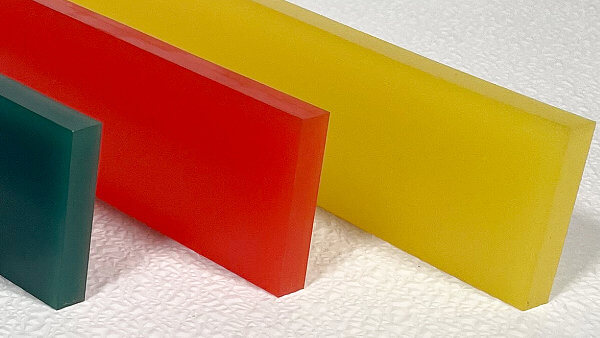Achieving the best screen printing performance and productivity is greatly dependent on selecting the correct Pleiger Plei-Tech® screen printing squeegee for the application and proper squeegee maintenance. When printing, monitor production time and rotate squeegees frequently. The necessary rotation frequency is dependent on the ink/solvent system involved in the application. By doing so, you will achieve a more uniform print quality and increase the life of your squeegees.
For best squeegee maintenance, a squeegee should always be wiped clean and dry following its removal from the press and stored flat in a dry environment at room temperature. The blade should be allowed to recover from the ink and solvent attack and rest for 24 hours. It can then be placed back into production, or if necessary re-sharpened and put back into production.
Screen Printing Squeegee Storage
Polyurethane squeegees should always be stored flat in a dry (50% relative humidity) environment at room temperature (approximately 60-70°F). For the best squeegee maintenance, storage at temperatures below 60°F may show an increase in durometer, which does not influence the polyurethane's physical properties or performance. Under these squeegee maintenance storage conditions, the shelf life of the squeegee is approximately one year. Older screen printing squeegees often show increased printing performance.

Plei-Tech® 22 will darken in color when exposed to UV and fluorescent light slowly. This change in color does not affect the physical properties or the ink/solvent resistance of the polyurethane and improves it slightly. Our standard colors are 55A-Green, 60A-Orange, 70A-Yellow, 75A-Green, 80A-Blue, 85A-Red, and 90A-Natural.
Plei-Tech® 15 (Vulkollan®) is amber and will darken in color while stored. When subjected to UV and fluorescent light, a color change may happen in as little as 24 hours. This color change does not affect the polyurethane's physical properties or ink/solvent resistance. There is a measurable improvement in solvent and abrasion resistance in this particular material.
Squeegee Maintenance: Re-sharpening
Abrasive grinding re-sharpening methods can achieve an acceptable re-sharpened edge for some printing applications. The screen printing squeegee should always be advanced perpendicular to the grinding belt or wheel in a very smooth and slow motion using very little pressure. Higher-quality polyurethanes will be more resistant to this type of re-sharpening. Therefore, less material should be attempted to be removed per pass, and less pressure should be applied. Harder durometer screen printing squeegees are easier to re-sharpen than softer durometer squeegees.

